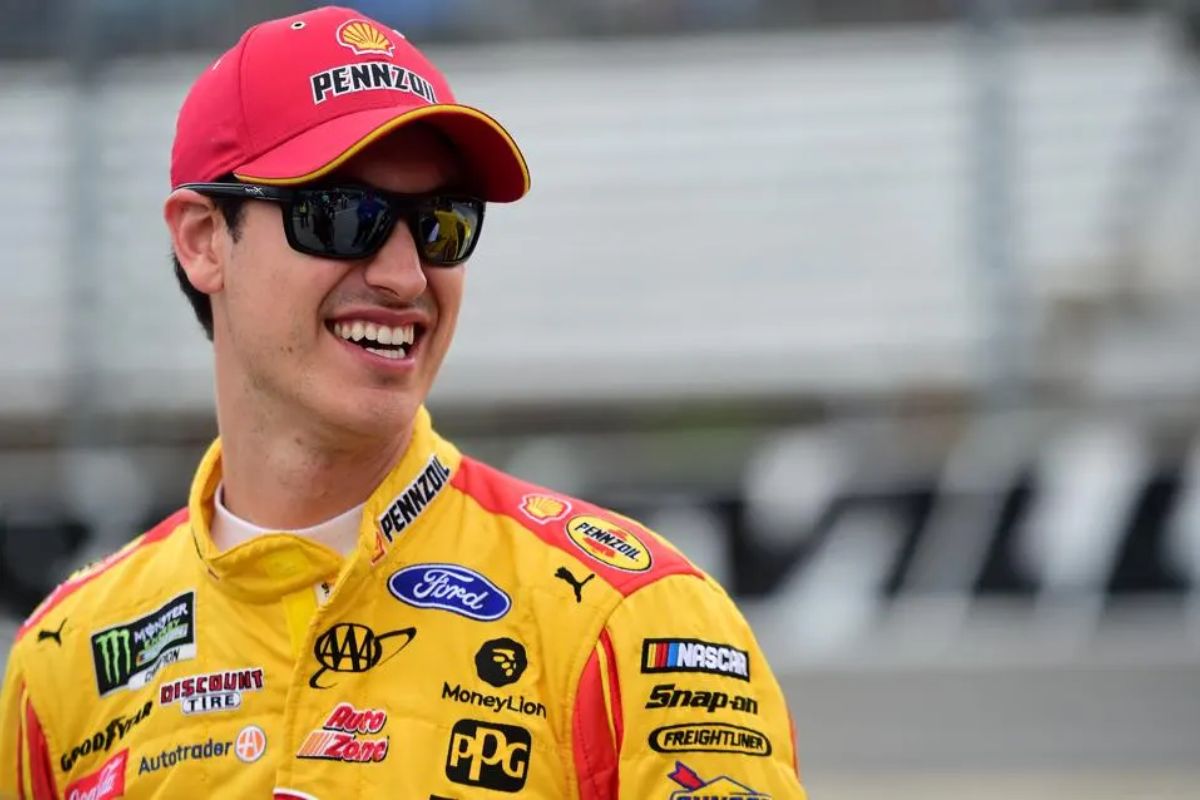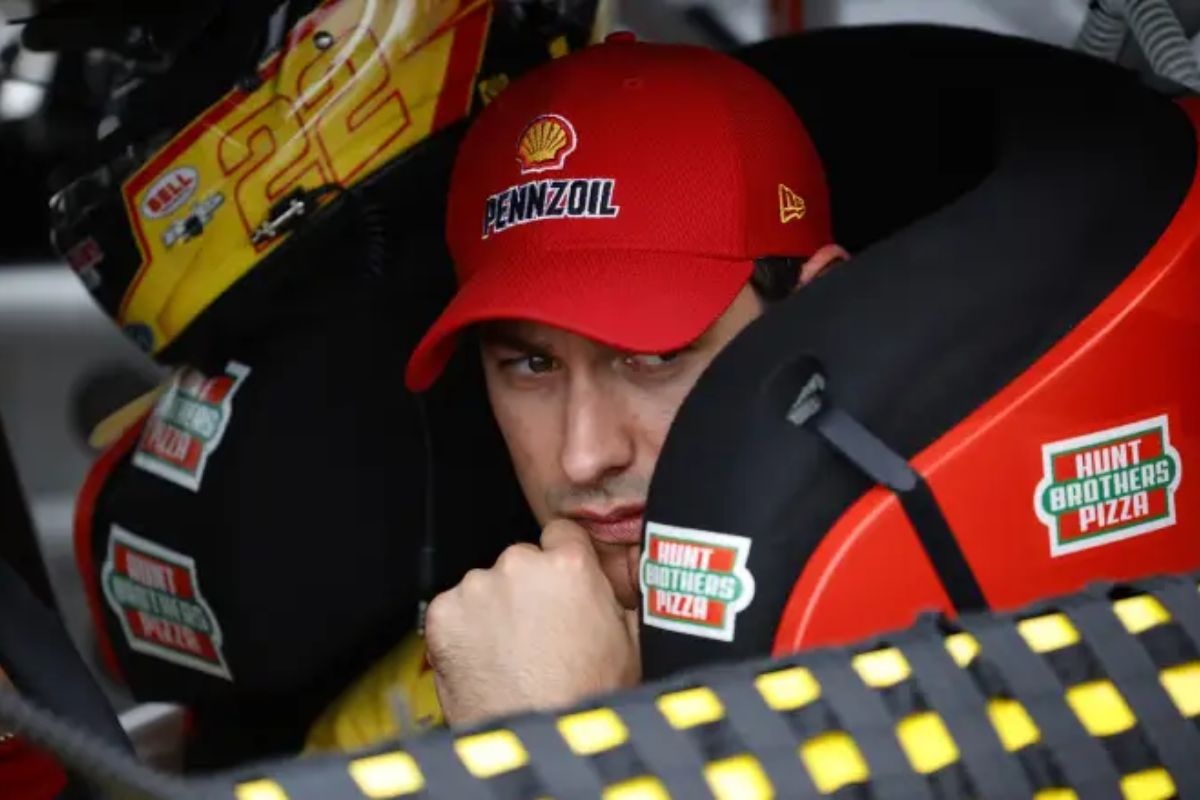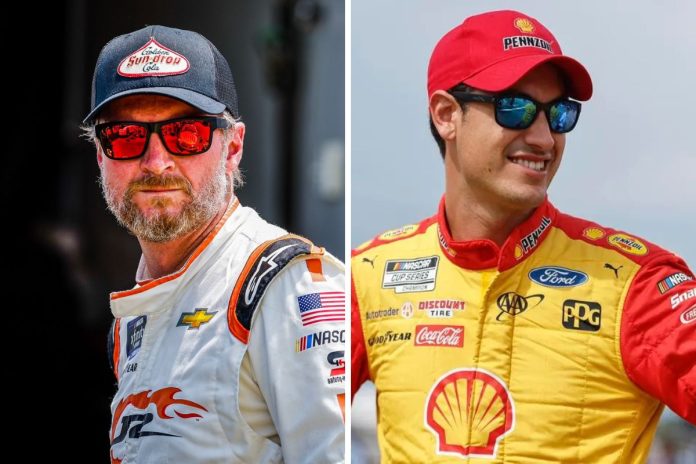Dale Jr Roasts Logano: In the thrilling world of NASCAR, the recent shift of the ‘villain’ title from Joey Logano to Denny Hamlin has sparked an intriguing discourse among enthusiasts and pundits alike. This pivot is further emphasized by Dale Earnhardt Jr.’s playful engagement on social media, where a clever GIF served not just to roast Logano but also to highlight the changing dynamics within the sport. Such interactions showcase the significant impact of personality-driven narratives in NASCAR, creating a intricate tapestry of rivalry, camaraderie, and fan allegiance. As the community ponders this evolution, one can’t help but wonder about the future implications for the sport’s culture and its heroes and villains.
Key Takeaways
- Dale Jr humorously engaged with poll results, spotlighting Hamlin as NASCAR’s new villain, succeeding Joey Logano.
- Fans recognized Hamlin’s role as the antagonist through a poll, showcasing the shift in villainous perception from Logano to Hamlin.
- Logano, once seen as NASCAR’s primary villain, has seen his image evolve, while Hamlin steps into the spotlight of controversy.
- Dale Jr’s use of a GIF in response to the poll results added a light-hearted twist to the discussion of NASCAR’s villain dynamics.
- The conversation around NASCAR’s villains, including surprise mentions of Ross Chastain, reflects the ever-changing narrative landscape of the sport.
Joey Logano’s Past Villainous Image
Although Joey Logano might not embody the archetype of a villain outside the racetrack, his relentless pursuit of victory and aggressive driving style have historically cast him in the role of NASCAR’s antagonist, a title that has both defined and complicated his career in the sport. Logano’s approach to racing, characterized by his unwillingness to concede even an inch to his competitors, has often polarized opinions among fans and fellow drivers equally. This uncompromising attitude on the track, while yielding significant success including two Cup Series championships, has also led to numerous on-track confrontations and rivalries, further cementing his image as the sport’s villain.
However, the narrative around Joey Logano’s career has been nuanced and multi-dimensional. Off the track, Logano is known for his charitable work and affable nature, a stark contrast to the competitive persona he dons while racing. This dichotomy has made Logano a complex figure within NASCAR, challenging the simplistic categorization of heroes and villains that often prevails in sports storytelling.
As Logano seems to have passed on the mantle of NASCAR’s villain, it is important to recognize the role that such figures play in the drama and appeal of motorsport. Villains, or perceived antagonists, add depth and intrigue to the narrative of the sport, driving fan engagement and emotional investment. Logano’s tenure as NASCAR’s antagonist highlights the delicate balance between competitive spirit and sportsmanship, a balance that is essential for the vibrancy and dynamism of NASCAR.

Denny Hamlin Named the New Villain
In the ever-evolving narrative of NASCAR’s rivalries, Denny Hamlin has emerged as the latest figure to occupy the role of the sport’s antagonist, a transformation highlighted by a significant change in fan perception and public opinion. This shift is accentuated by a recent poll where fans overwhelmingly named Hamlin as the current villain of NASCAR, with a staggering 69.9% of votes. The designation of the villain role to Hamlin signifies a crucial change in the dynamics of NASCAR’s competitive landscape.
Joey Logano, Hamlin’s predecessor in this unofficial yet impactful position, crafted his reputation over years of aggressive driving and notable physical altercations, most memorably with Kyle Busch. Logano’s driving style, often pushing the limits of sportsmanship to secure a win, coupled with his involvement in physical confrontations, painted him as the quintessential antagonist in the eyes of many fans. However, the torch has seemingly been passed, with Logano stepping down from this role and Hamlin now viewed through the lens of the villain.
The reasons behind Hamlin’s ascension to this role are deeply rooted in public opinion, shaped by his actions on and off the track. While specific incidents leading to this shift were not detailed, it’s clear that fan sentiment plays a critical role in defining the narratives that surround NASCAR’s drivers. This development invites a deeper analysis of Hamlin’s career and actions, encouraging a balanced discussion on what propels a driver into the domain of villainy within the sport’s culture.
Who do you think is NASCAR's top modern villain?
— The Daily Downforce (@dailydownforce) April 4, 2024
Dale Earnhardt Jr’s Reaction and Fan Responses
Dale Earnhardt Jr’s clever engagement with the poll results, particularly his amusing endorsement of Joey Logano’s newfound relief as the NASCAR community’s focus shifts to Denny Hamlin, sparked a lively interaction among fans on social media platforms. Observing the poll orchestrated by The Daily Downforce, which crowned Hamlin as the top modern villain with a substantial majority, Dale Jr’s intervention added a layer of humor and intrigue to the conversation. His choice to communicate through a GIF, symbolizing Logano’s hypothetical sigh of relief, not only highlighted Dale Jr’s talent for engaging with the NASCAR fanbase but also emphasized the evolving narratives within the sport.
The dynamics of this interaction are remarkable for several reasons:
- Engagement: Dale Jr’s post served as a catalyst for further fan participation, encouraging a blend of humor and analysis in the public discourse.
- Fan Community Dynamics: This moment exemplifies the fluid nature of fan and driver interactions in the digital age, where social media platforms are arenas for shared experiences and expressions.
- Narrative Influence: The incident emphasizes how retired drivers like Dale Jr continue to shape the sport’s narratives and fan perceptions, even outside the racetrack.
- Cultural Insight: It provides a glimpse into the culture of NASCAR, where rivalries, personalities, and fan opinions play a significant role in shaping the sport’s social fabric.
This episode, while seemingly light-hearted, offers a microcosm of the complex interplay between sports figures, fans, and media in crafting the ongoing saga of NASCAR’s heroes and villains.
Joey rn https://t.co/ESwlXLWrFu pic.twitter.com/8kmLoRk24N
— Dale Earnhardt Jr. (@DaleJr) April 4, 2024
Fan Reactions
Responding to the poll results, NASCAR fans exhibited a mix of surprise and curiosity, particularly regarding the unexpected inclusion of Ross Chastain alongside established figures like Hamlin and Logano. The juxtaposition of Chastain, a relatively new face in the world of NASCAR villainy, with seasoned competitors such as Hamlin and Logano, sparked a dynamic conversation among the fanbase. It highlighted the evolving nature of the sport’s narratives and the characters that drive its drama.
Is Kyle's villain era even modern
— PlatypiNetwork (@PlatypiNetwork) April 4, 2024
While Hamlin and Logano’s inclusion in discussions about NASCAR’s most polarizing figures is well-founded, given their histories and accomplishments, Chastain’s presence highlights a burgeoning shift. Logano, a two-time Cup Series champion, and Hamlin, a respected veteran still chasing his first championship, represent the established order. Their rivalry and on-track incidents have solidified their positions as figures of contention within the fan community. However, the curiosity around Chastain suggests fans are not just clinging to past narratives but are also keenly observing emerging talents and their impact on the sport’s competitive landscape.
I get the other 3 but what in the watermelons has Ross done to brand himself a villain?
— Andy Knapp (@theandyknapp) April 4, 2024
This nuanced fan reaction encapsulates the complex relationship between NASCAR’s heroes and villains. It’s a dynamic interplay that goes beyond mere wins and losses, exploring the personalities, on-track decisions, and moments that define the sport’s ethos. As the 2024 season approaches, the question of whether Hamlin will secure his elusive championship remains a tantalizing prospect. However, what’s equally compelling is how the narratives around these drivers will evolve and how fans’ perceptions may shift, reflecting the ever-changing tapestry of NASCAR’s storied history.

News in Brief
The shift of the villainous persona within NASCAR from Joey Logano to Denny Hamlin exemplifies the fluid and dynamic nature of sports narratives, influenced greatly by the personalities involved.
Dale Earnhardt Jr.’s humorous engagement with this change not only emphasizes his enduring impact on the sport but also highlights the role of fan interaction in evolving these narratives.
This episode reflects the complex interplay between athletes’ actions and public perception, shaping the ongoing discourse within the NASCAR community.
Our Reader’s Queries
Q: Who inherited Dale Earnhardt’s money?
A: Following his passing, numerous anecdotes emerged highlighting Dale Earnhardt’s philanthropic endeavors and his willingness to assist those in need. While he amassed wealth through racing, greed wasn’t commonly associated with him—until his demise and the subsequent inheritance by Teresa.
Q: Does Dale Earnhardt Jr have a wife?
A: During the construction of his residence in North Carolina, Dale Jr. crossed paths with his future spouse, Amy Reimann. At the time, Amy worked as an interior designer at Wakefield Beasley & Associates, an architectural firm based in Atlanta.
Also Read: Dale Earnhardt Jr.’s Tech Masterstroke: Elevating NASCAR’s Roots!


